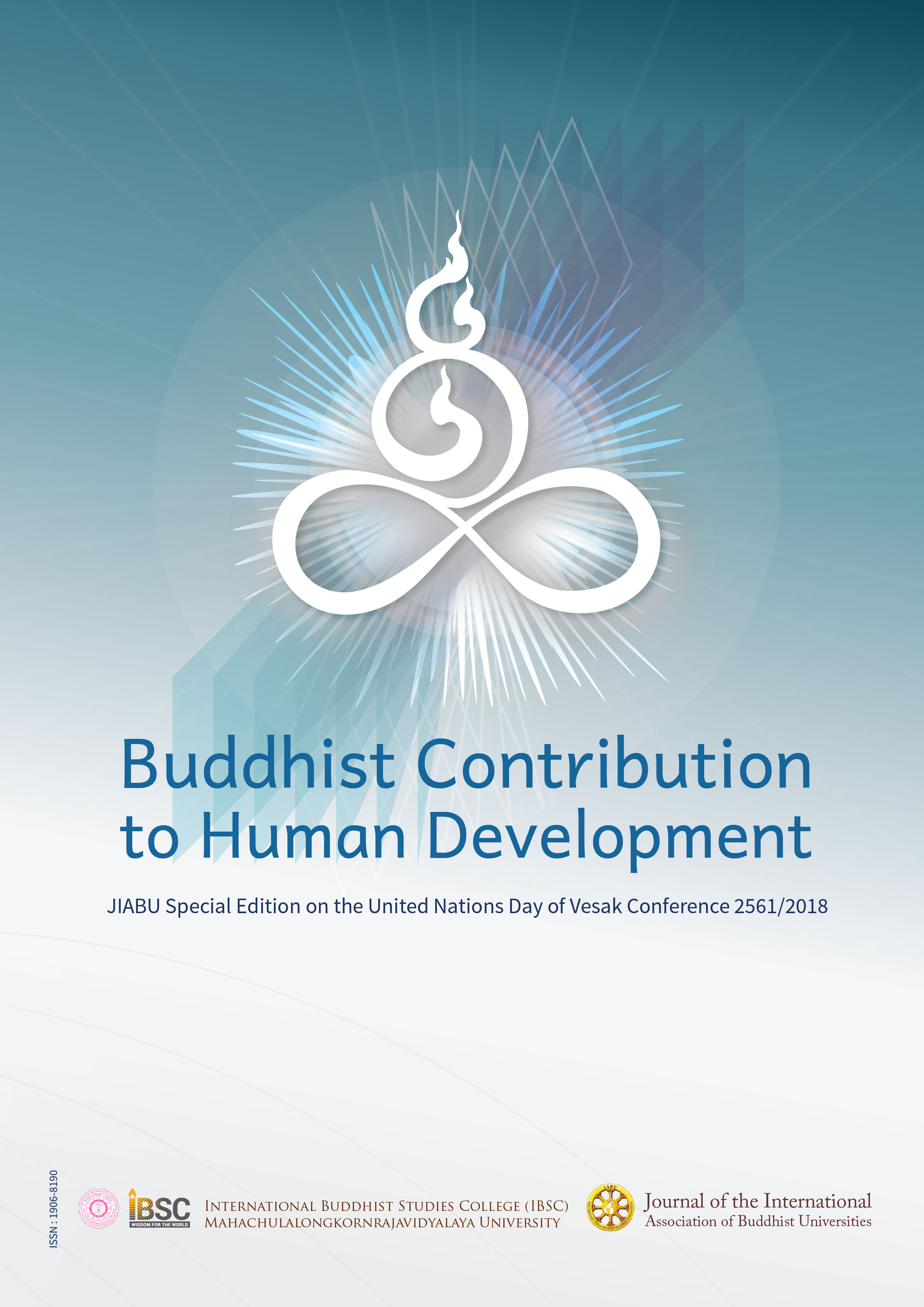Non-Buddhists Promoting and Preserving Buddhist Cultural Heritage through Performing Arts in Indonesia
Main Article Content
Abstract
The conservation of world cultural heritage, both tangible and intangible, has been
promoted and facilitated by the United Nations Educational, Scientific, and Cultural
Organization (UNESCO). Even though Indonesia has ratified the UNESCO’s convention of
the Safeguarding of Intangible Cultural Heritage in 2007, the preservation of intangible
cultural heritage has not yet received equal attention and effort as tangible cultural heritage
should have. Rites, rituals, and traditional performing arts are one of the Magelang
Regency’s cultural assets and are rich in local wisdom have been marginalized and
neglected. In response to these situations, people of Borobudur and its surroundings have
begun initiatives in preserving their intangible cultural heritage.
One of the programs of Ruwat-Rawat Borobudur's annual event which becomes the
focus of this paper is called Kidung Karmawibhangga.4. Given the context that Indonesia is
the largest country with the Muslim population in the world, it is intriguing to find out why nonBuddhist art groups learn about and create new arts work based on Karmawibhangga,
The Buddhist teaching of the law of Kamma.
Article Details
Views and opinions expressed in the articles published by The Journal of the International Association of Buddhist Universities (JIABU), are of responsibility by such authors but not the editors and do not necessarily reflect those of the editors.
References
that Celebrates Diversity and Multiculturalism,” in Karma Lekshe Tsomo, Compassion
and Social Justice, (Indonesia: Sakyadhita E-Publication, 2015), pp. 92-96.
Hatley, Barbara and Brett Hough, Performing Contemporary Indonesia: Celebrating Identity,
Constructing Community, (Leiden, Boston: Brill, 2015).
Kanki, Kiyoko, Laretna T. Adhisakti, Titin Fatimah, Borobudur as Cultural Landscape: Local
Communities’ Initiatives for the Evolutive Conservation of Pusaka Saujana Borobudur,
(Kyoto: Kyoto University Press, Melbourne: Trans Pacifi c Press, 2015).
Lindsay, Jennifer, “A New Artistik Order?” Inside Indonesia 93 July-September, 2008. http://
www.insideindonesia.org/a-new-artistic-order-2. Retrieved: April 5, 2014.
Soedarsono, R.M., Seni Pertunjukan dari Perspektif Politik, Sosial dan Ekonomi, (Yogyakarta:
Gadjah Mada University Press, 2011).
UNESCO, “Performing Arts (Such As Traditional Music, Dance, and Theatre),” https://ich.
unesco.org/en/performing-arts-00054. Retrieved: April 5, 2015.
Wimar, Sonny and Amat Sukandar, Harmoni Kehidupan dalam Ruwat-Rawat Borobudur,
(Magelang: Warung Info Jagad Cleguk, 2018).

